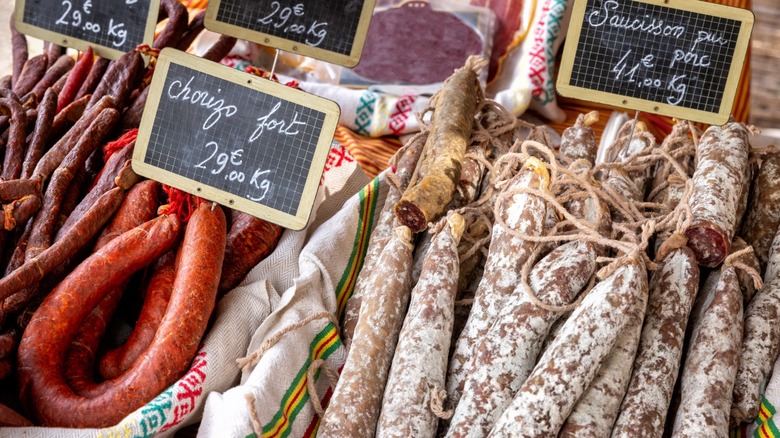When grilling season comes around, hot dogs and sausages are popular choices at backyard barbecues across the country. If you’ve ever stopped to wonder what the difference is between a hot dog and a sausage, you’re not alone. The answer isn’t as simple as you might think. That’s especially true since hot dogs are very frequently categorized as just a kind of sausage. The National Hot Dog and Sausage Council refers to frankfurters as sausages, and so does the Merriam-Webster dictionary. The question is a bit like asking what’s the difference between a dachshund and a dog. Every hot dog is a sausage, but not every sausage is a hot dog.
The name sausage may bring to mind artisanal links in a specialty shop, a Polish sausage loaded with sauerkraut and mustard, or spicy chorizo added to a dish to bring some flair. On the other hand, the name hot dog often conjures images of a ballgame or a street cart where you can get a quick, cheap bite to eat.
Hot dogs also get a bad rap thanks to their reputation for being made with low-quality ingredients and additives. That reputation isn’t always deserved. As with most foods, there are both low- and high-quality versions on the market. To really understand what makes a hot dog distinct from other kinds of sausage, we need to go back to the beginning and find out what a sausage really is.
What are sausages?
Sausage comes in several forms: raw, cured, smoked, and cooked. All of these are common around the world. Raw sausages, like bratwurst, are made from fresh meat and must be cooked before eating. Cured sausages, like salami, are cured in salt and air-dried. Smoked sausages, like andouille, are preserved through smoking which gives them a dry texture and a rich, smoky flavor. These can be eaten without further cooking. You could eat these as-is, but many are best when reheated.
For any sausage, fresh meat is ground and mixed with spices, seasonings, and sometimes fat and other ingredients like cheese, vegetables, fruit, or really anything a sausage maker can imagine. Grains or blood are sometimes used as binders. The mixture is encased in a skin (natural or synthetic) and prepared as required.
The exact origins are unknown, but it’s safe to assume our ancestors discovered that salt could preserve meat. That was key to the creation of sausage. The word sausage can be traced to the Latin salsus which means salted. Nearly every sausage is, at its core, ground meat seasoned with salt and spices. People have been making sausages for over 5,000 years and there are over 250 types of sausage available today, from German Oktoberfest to Spanish chorizo to Chinese lap cheong and beyond.
What are hot dogs?
The meat in a hot dog is very finely ground, reduced to an emulsified paste. Sausages often have a very coarse grind of meat and seasonings, but emulsification is an important characteristic of hot dogs. This thorough blending ensures consistency in the final product, as the proteins absorb the fat and water to create a hot dog with a smooth texture and consistent flavor from first bite to last.
Seasonings are added along with fillers and more fat, in some cases. These are pumped into a skin and then smoked and cooked. You’ll never find a raw hot dog for sale. If you want to get even more specific, there’s actually a difference between hot dogs and franks.
Frankfurters date back to 1487 in Germany. Serving them on bread, and ultimately in rolls, came later, but was probably also a German innovation that caught on in America in the late 1800s. According to the sausage makers at Pederson’s Natural Farms, a traditional frankfurter (like the kind developed in Frankfurt, Germany) is only made from pork. Frankfurters are also traditionally smoked. Hot dogs can be made from any kind of meat and are meant to be served in a bun. You can cook hot dogs in any number of ways, but at the end of the day, it’s still just one kind of sausage.







